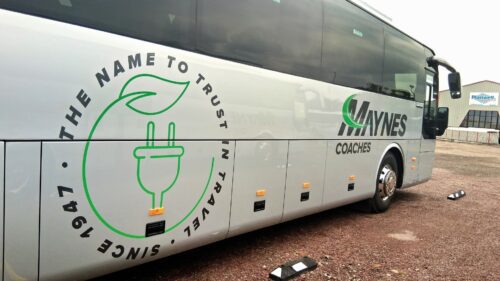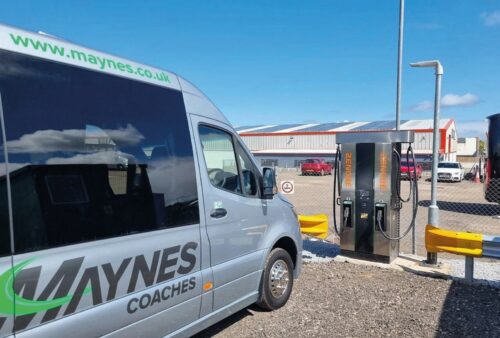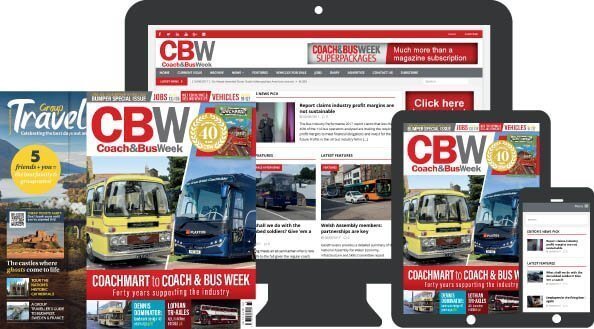
In the north of Scotland, Maynes Coaches has recently been plugged in to the grid with a growing fleet of electric coaches. Jonathan Welch paid a visit to find out more
There’s barely a week goes by when we don’t hear of another zero-emission project; the delivery of new electric buses, the installation of new charging points, schemes to open up depot charging to third parties, or even development on the hydrogen front. But for the most part, and with a few notable exceptions, the news mainly focuses on the bus sector.
It is, to an extent, understandable. Buses were the low-hanging fruit. Predictable routes, returning to the same depot each night, and travelling a known number of miles each day. They make an easy and obvious candidate for electrification. And whatever your views on the rights and wrongs of battery technology replacing diesel, it’s fairly clear the the vehicles are becoming more and more capable, with range increasing as each new generation is introduced, and battery size and weight reducing.
We’ve even gone as far as proving that, despite nay-saying from critics, electric vehicles are capable of operating on regional and inter-city routes. Operators including Westway, Wattsway, Coatham Coaches, Swans, AirSym, Hearns, LandFlight, Grange Travel and York Pullman in England, Newport Transport in Wales and Ratho Coaches in Scotland have taken them in small numbers, but by far the largest number of e-coaches have been delivered to Scottish express operator Ember, which is now rapidly expanding its route network, growing from basic services mirroring the existing (and popular) ‘Saltire Cross’ routes to add services from both Glasgow and Edinburgh to Fort William, Aberdeen to Inverness, Inverness to Wick and Thurso in the far north and a new ‘inland’ Cairngorm route between Aberdeen and Dundee via Braemar and Blairgowrie, restoring long-lost links along the A93.
Another name to join the growing list is Maynes of Buckie. I visited the company at the beginning of last year, speaking to Director Kevin Mayne for issue 1610 of CBW about the company’s history and plans for the future; electrification and hydrogen were both topics that Kevin spoke about with enthusiasm. Now that the first of the company’s electric coaches are in service, I was keen to go back and see how they’re working out.

Historical recap
Quickly and briefly turning back the clock for a recap on the company itself, Maynes has a long history in its local area, but its coaches have become a familiar sight far from its base in Buckie, on Scotland’s Moray Firth coast. As with many similar businesses, its origins were small. It was established in 1947 by James Mayne, building on his experience of operating taxis and limousines.
James’ first coach was a 29-seat Duple-bodied Bedford OB, a size that we would today call a ‘midicoach,’ but as is often the case, demand outgrew supply and a second coach was bought, private hires being the company’s mainstay in its early years, such as trips along the coast for local fishing communities, taking football supporters to local team Buckie Thistle’s away matches, and local church, school and Sunday school outings. Select second-hand purchases around three to four years old helped to grow the fleet, which in its early years was dominated by Bedford and Ford.
[…]Are you enjoying this feature? Why not subscribe to continue reading?
Subscribe for 6 issues/weeks from only £6Or login if you are already a subscriber
By subscribing you will benefit from:
• Operator & Supplier Profiles
• Face-to-Face Interviews
• Lastest News
• Test Drives and Reviews
• Legal Updates
• Route Focus
• Industry Insider Opinions
• Passenger Perspective
• Vehicle Launches
• and much more!


